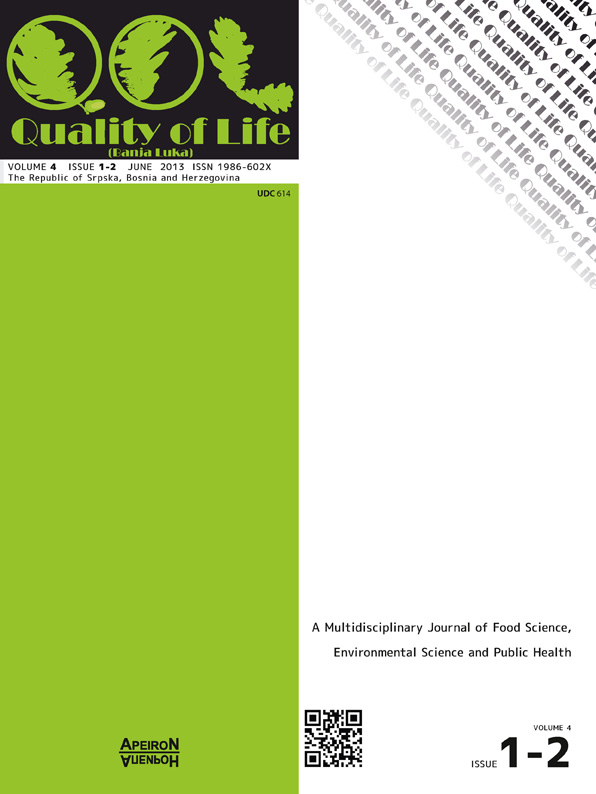Optimization of the Process of Production of Ceramics From Waste Coal Ash Case Study: The Influence of the Mechanical Activation
DOI:
https://doi.org/10.7251/QOL1301020AAbstract
Abstract: Fly ash, a waste by-product obtained in a thermal power plant has been a generated problem of the disposal all over the world. Morphological characteristics, physicochemical properties and pozzolanic activity make this waste potential material for production of ceramics. In this study high density ceramics compacts were produced by using fly ash from the power plant REK Bitola, Republic of Macedonia. In order to increase geometrical factor of activity, the mechanical activation of the fly ash was applied. The process of optimization of the main process parameters is conducted, such as time of mechanical activation, sintering temperature and heating rate and their interactions on the properties of obtained dense ceramic porosity and bending strength as a response function. The optimization was performed through application of 3D surface method and the obtained results are presented in the graphical and analytical form using “Statgraphics Centurion” software package.Downloads
Published
2013-06-25
Issue
Section
Чланци
